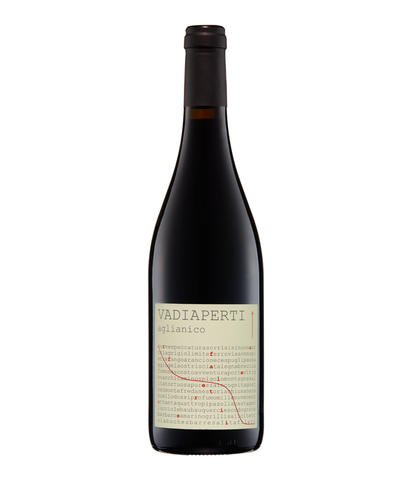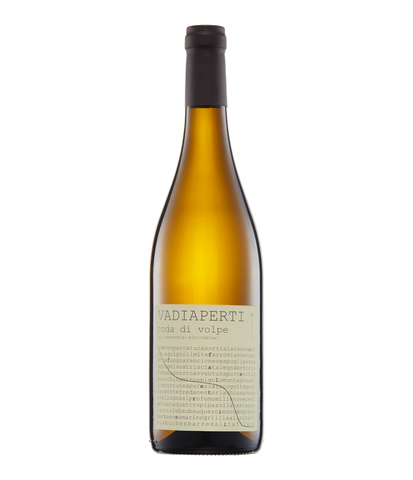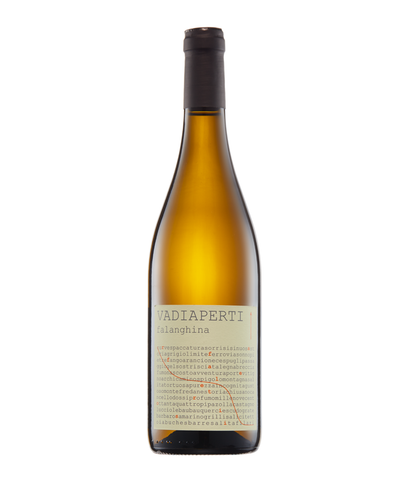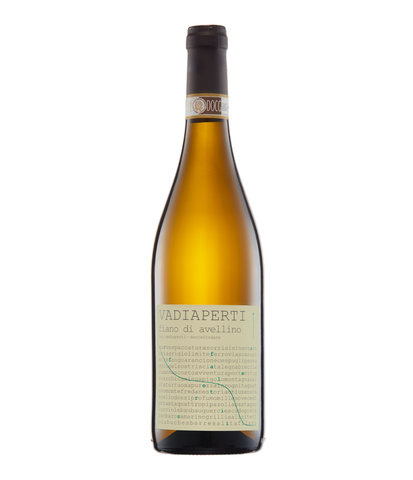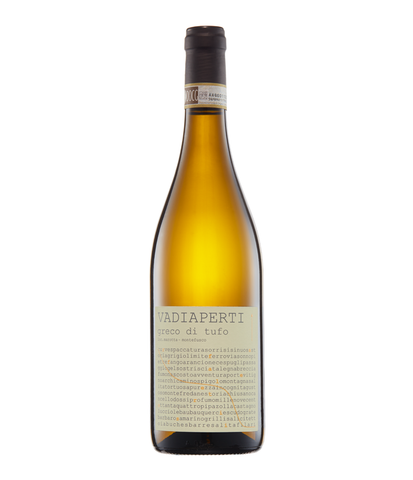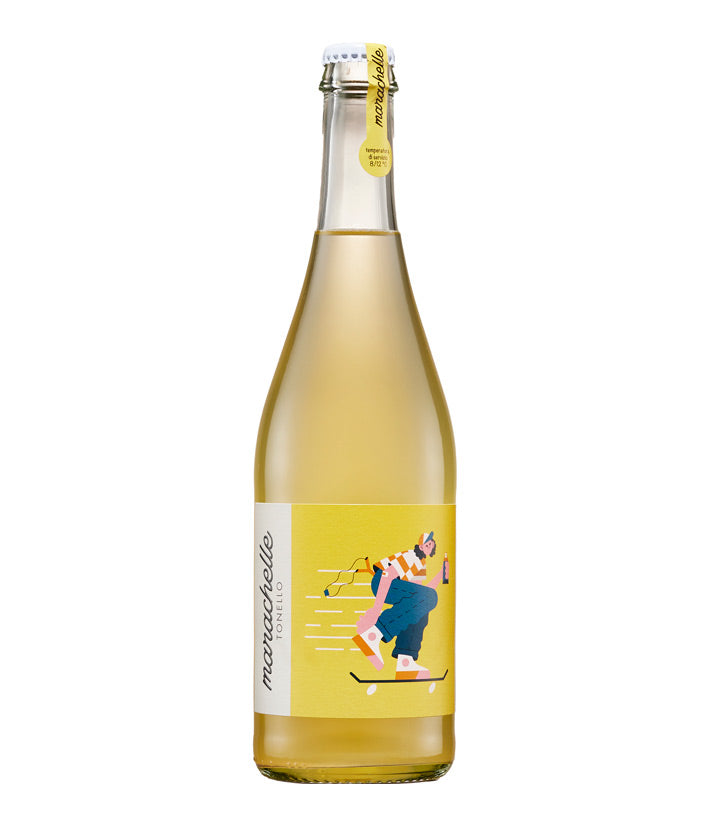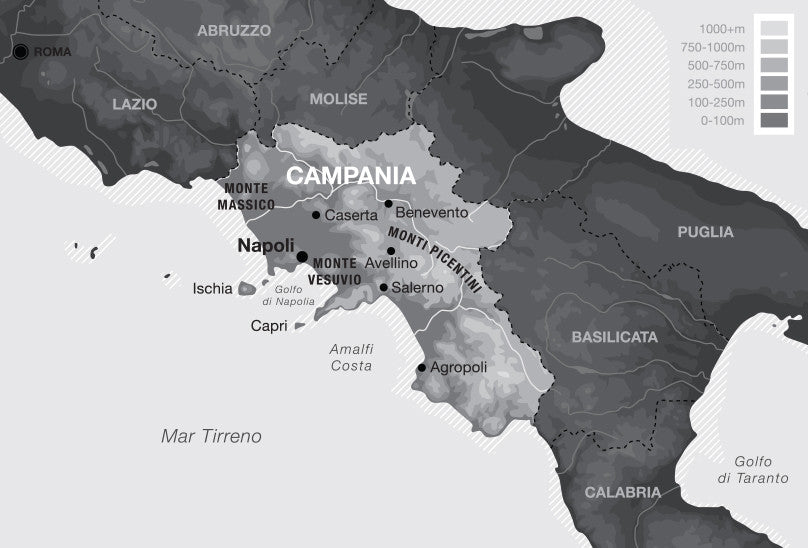
Campania
Campania offers up such an emblematic image of southern Italy: a smouldering Vesuvius, pizza margherita, San Marzano tomatoes, mozzarella di bufala, the fabled Sorrentine lemons (and attendant limoncello), the magical island of Capri, and on the less savoury side, the apparently endemic influence of the Camorra. Campania is an agricultural hub, with ample sunshine bathing the fertile plains, but it is also a region characterised by a mountainous interior and dramatic coastline.
As with much of the ‘old world’ the most compelling wines from Campania are made from varieties that have found their niche over time. Almost lost to changing tastes, industrialisation and internationalism, today, Fiano, Greco di Tufo, Falanghina and Aglianico are preeminent in Campania’s, and indeed Italy’s, vinous identity.
Red wine production, and typically Aglianico for quality, forms the backbone of Campanian ...READ MORE
Campania
Campania offers up such an emblematic image of southern Italy: a smouldering Vesuvius, pizza margherita, San Marzano tomatoes, mozzarella di bufala, the fabled Sorrentine lemons (and attendant limoncello), the magical island of Capri, and on the less savoury side, the apparently endemic influence of the Camorra. Campania is an agricultural hub, with ample sunshine bathing the fertile plains, but it is also a region characterised by a mountainous interior and dramatic coastline.
As with much of the ‘old world’ the most compelling wines from Campania are made from varieties that have found their niche over time. Almost lost to changing tastes, industrialisation and internationalism, today, Fiano, Greco di Tufo, Falanghina and Aglianico are preeminent in Campania’s, and indeed Italy’s, vinous identity.
Red wine production, and typically Aglianico for quality, forms the backbone of Campanian viticulture, and it is in the elevated cool of inland regions that it consistently reaches its greatest heights. Taurasi, in the historic winegrowing region of Irpinia, is responsible for many of the wines of note. Taurasi tends to the densely fruited and powerfully structured with an often gruff, mineral-inflected grip. Further north, Taburno turns up the structural intensity even more, and the wines greatly benefit from extended time in the cellar.
Campania’s most famous and notable whites also come from the mountainous area near Taurasi. The DOCGs, Greco di Tufo and Fiano di Avellino, represent two key white grapes in terrain that imparts distinct minerality and finesse. While Coda di Volpe can also provide a minor blending component for these wines, its strongest identity is seen in Lacryma Christi del Vesuvio. Campania’s second most important red grape, Piedirosso, takes centre stage in the red version of Lacryma Christi.
In the province of Caserta there are two notable nods to the ancients: Felerno del Massico is a resurrection of the legendary Roman Falernian, employing Falanghina for the white, and Piedirosso and Aglianico for the red; while Casavecchia di Pontelatone celebrates the revival of the Casavecchia grape (believed to be responsible for the Roman’s Trebulano) that was, as the legend goes, propagated from the last extant specimen – a tree like vine thriving near the ruins of an old house.
Principal denominations: Aglianico del Taburno DOCG, Casavecchia di Pontelatone DOC, Cilento DOC, Falanghina del Sannio DOC, Falerno del Massico DOC, Fiano di Avellino DOCG, Greco di Tufo DOCG, Irpinia DOC, Ischia DOC, Sannio DOC, Taurasi DOCG, Vesuvio DOCImportant white varieties: Asprinio, Coda di Volpe, Falanghina, Fiano, Greco
Important red varieties: Aglianico, Casavecchia, Forastera, Piedirosso
COLLAPSE TEXT
- Page 1 of 1
-
- Page 1 of 1
-
